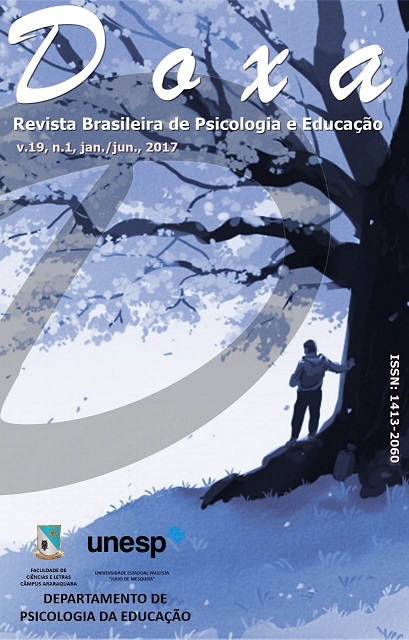Intervention with families who’s children are deafblind
DOI:
https://doi.org/10.30715/rbpe.v19.n1.2017.10816Keywords:
Special Education. Deaf-Blind. Communication. Mediation.Abstract
The family is the primary agent mediator between the individual and the other units of the company. Interfered in cases of the presence of a change in the child's development. The present study aimed to implement and evaluate an intervention program that provides increasing opportunities for developing new skills in parents, about the possibilities and techniques of communication more viable with their deafblind children. Two families that have daughters deafblind (labeled 7F and 9F) , pre - linguistic , both with bilateral profound hearing loss associated with low vision monocular participated . Data collection occurred 106 meetings with families, distributed forms of distinct activities: initial assessment, meetings, open classes, information exchange, home visits, and final evaluation. The most prominent aspect of the families were the development and expansion of communication resources. This fact has promoted positive and important changes in the behavior of daughters. Probably the progress and achievements made by the participants only became feasible due to the constant contacts established between school and family context.Downloads
References
BRASIL. Secretaria de Educação. Constituição: República Federativa do Brasil. Brasília, 1988.
CADER-NASCIMENTO, F. A. A. A.; COSTA, M. P. R. da. Descobrindo a surdocegueira: Educação e Comunicação. São Carlos: Ed. da UFSCar, 2007.
CHACON, M. C. M. Deficiência mental e integração social: o papel mediador da mãe. Revista Brasileira de Educação Especial, Marília, v.3, n.5, p.87-96, 1999.
MIRA, M.; HOFFAMAN, S. Educational programing for multihandicapped deaf-blind children. Exceptional Children, Reston, v.40, n.7, p.513-514, 1974.
MURDOCH, H. The development of infants who are deaf-blind: a case study. Journal of Visual Impairment & Blindness, New York, v.88, n.4, p.357-367, 1994.
REGEN, M.; ARDORE, M.; HOFFMANN, V. M. B. Mães e filhos especiais: relato de experiência com grupos de mães de crianças com deficiência. Brasília: CORDE, 1993.
TELFORD, C. W.; SAWREY, J. M. O indivíduo excepcional. 5.ed. Rio de Janeiro: Zahar, 1988.
WATKINS, S. et al. The effectiveness of an intervener model of services for young deaf-blind children. American Annals of Deaf, Washington, v.139, n.4, p.404-409, 1991.
Downloads
Published
How to Cite
Issue
Section
License
Copyright (c) 2017 DOXA: Revista Brasileira de Psicologia e Educação

This work is licensed under a Creative Commons Attribution-NonCommercial-ShareAlike 4.0 International License.
Manuscritos aceitos e publicados são de propriedade da Doxa. É vedada a submissão integral ou parcial do manuscrito a qualquer outro periódico. A responsabilidade do conteúdo dos artigos é exclusiva dos autores. É vedada a tradução para outro idioma sem a autorização escrita do Editor ouvida a Comissão Editorial.









